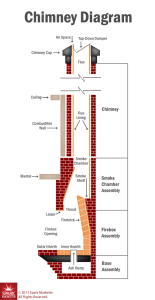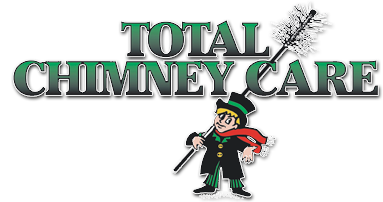 You build a fire in the fireplace, and smoke goes out the chimney, but do you really know how your fireplace works? Knowing the anatomy of your fireplace can help you better understand how to get the most out of it and how to troubleshoot some basic problems. Knowing the anatomy of your fireplace also helps during your annual chimney sweeping and inspection. If you understand how all the parts of your fireplace and chimney work together, you will be able to better communicate your concerns with your certified chimney sweep and understand any issues your sweep may bring up with you.
You build a fire in the fireplace, and smoke goes out the chimney, but do you really know how your fireplace works? Knowing the anatomy of your fireplace can help you better understand how to get the most out of it and how to troubleshoot some basic problems. Knowing the anatomy of your fireplace also helps during your annual chimney sweeping and inspection. If you understand how all the parts of your fireplace and chimney work together, you will be able to better communicate your concerns with your certified chimney sweep and understand any issues your sweep may bring up with you.
Know what type of fireplace you have
There are two basic types of fireplaces: Masonry fireplaces, which are constructed out of bricks or stones, and prefabricated fireplaces, which are factory-built structures composed of a lightweight metal firebox and a metal chimney. There are hybrid fireplaces, which most often marry a prefabricated metal fireplace with a masonry chimney. A quick visual inspection will reveal your fireplace type. In addition to examining your firebox, you may want to glance up the chimney, as well, to see if the fireplace materials are consistent through the chimney or if you have a hybrid fireplace.
Know your chimney
If you have a factory-built fireplace, the chimney will be part of the overall system. Specifications of individual prefabricated chimneys will vary. A prefabricated fireplace and chimney are meant to work together to provide the ideal fire-burning conditions. A masonry chimney has up to 22 components. Just above the firebox, the smoke travels into a chimney’s throat. At the bottom of the throat is a horizontal smoke shelf, meant to keep any rain or debris from making its way into the firebox. The damper, which you likely are familiar with opening and closing, blocks of the bottom of the chimney’s throat when the fireplace isn’t in use to keep drafts, animals and debris out of your home. From the throat, the smoke and byproducts of your fire travel through a smoke chamber, up the flue and out the top of your chimney.
Know what’s atop your chimney
At the top of your masonry chimney is a mortar crown, which should surround the chimney opening, sloping downward away from the chimney and extending beyond the chimney’s outer edges. Your crown provides your chimney some protection from the elements. Your prefabricated chimney will feature a firestop near the top, and should be surrounded by flashing on the roof to prevent water from making its way down the chimney opening. Either type of fireplace should be topped with a chimney cap, which will cover the chimney opening with some sort of metal screen, preventing animals and debris from making its way into your chimney.
Regardless of the type of fireplace you own, your fireplace should be inspected and cleaned annually. The certified technicians at Total Chimney Care can walk you through your cleaning and inspection, helping you to understand your fireplace’s anatomy and potential problems.
